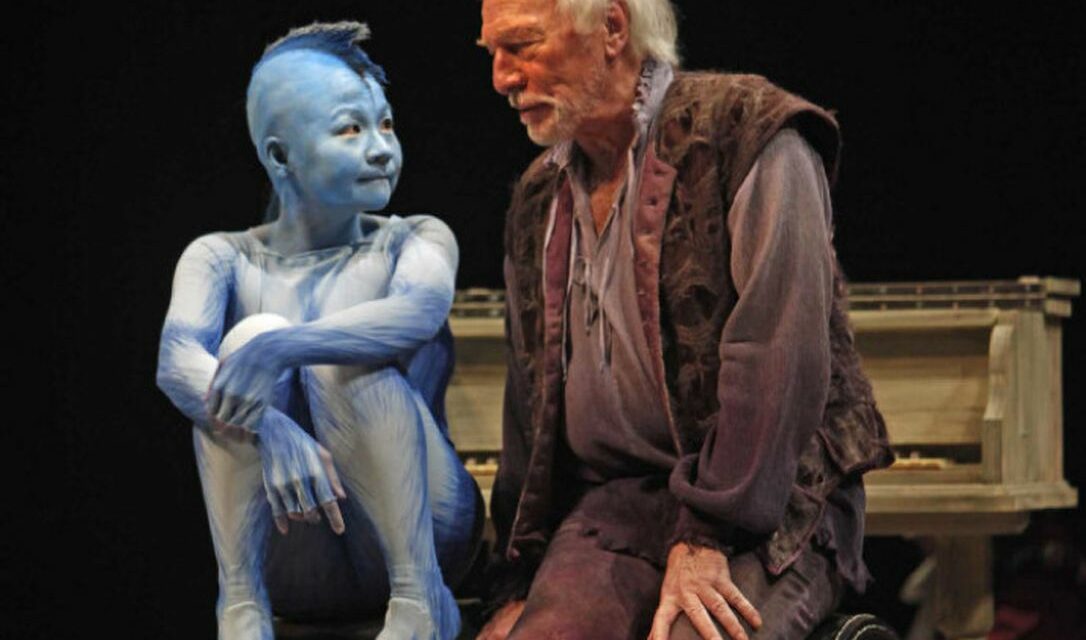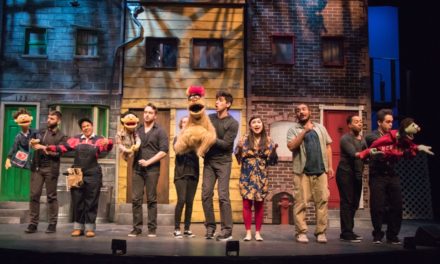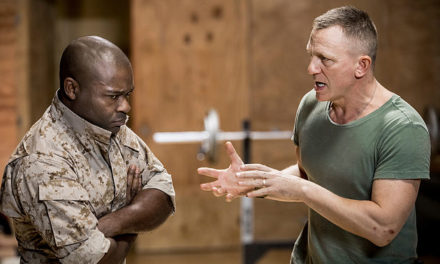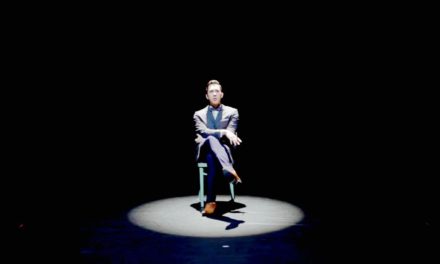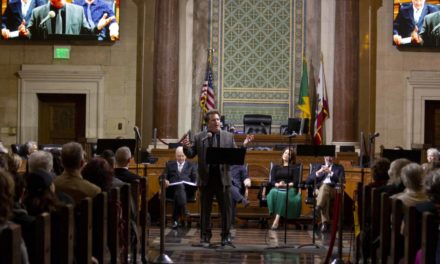Robert Blacker, Interviewed by Jacob Gallagher-Ross
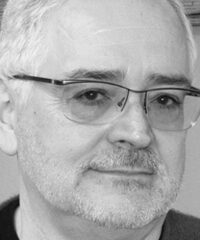
Robert Blacker
This interview was originally published in 2014 in The Routledge Companion to Dramaturgy (ed. Magda Romanska). TheTheatreTimes.com is reposting it here with permission to celebrate the life and work of Robert Blacker who died recently. Robert Blacker worked as a dramaturg for forty years at New York’s Public Theatre, La Jolla Playhouse (California) and the Stratford Shakespeare Festival of Canada. Over fifty projects from Blacker’s eight years as Artistic Director of the Sundance Theatre Labs went on to production including I Am My Own Wife (Tony, Pulitzer), The Laramie Project, The Light in the Piazza and Spring Awakening (Tonys for latter two). He was interim chair of playwriting at Yale School of Drama and has taught playwriting and Shakespeare studies in graduate programs at Columbia, Iowa, and Yale. Blacker was the first dramaturg at the Public Theater; Des McAnuff’s Associate Artistic Director at La Jolla Playhouse, where he worked on The Who’s Tommy and Steppenwolf’s The Grapes of Wrath (Tonys for both); and has dramaturged eighteen productions of Shakespeare at these theatres and the Stratford Festival, where he was Dramaturg for the past five years. He was a graduate of Cornell University. His most recent book, Shakespeare in Three Dimensions: The Dramaturgy of Macbeth and Romeo and Juliet, was published by the Routledge in Focus on Dramaturgy Series.
Dramaturgy in America was a European ideal grafted onto native aspirations. Arising in the 1970s, it became widely disseminated as a job description and set of emerging ideas in the 1980s, as a new generation of artistic directors took over regional theaters This piece attempts to indicate macrohistory by relating anecdotal microhistory, revealing snapshots of the evolution of American dramaturgy. In a series of interviews conducted over the winter and spring of 2013, Robert Blacker and I discussed the role of the dramaturg in a trio of theatrical institutions that represent three kinds of theatre organizations– regional, developmental, and classical. We talked about where the profession has been, and where it’s going, as the founding generation prepares to retire and new cultural and financial constraints produce new definitions of the role. The following is excerpted from Blacker’s remarks—Jacob Gallagher-Ross
On the La Jolla Playhouse
In only our second season La Jolla was nominated for a Tony for Best Regional Theatre. La Jolla emerged so quickly in prominence on the national scene because of the caliber of the artists that its artistic Director Des McAnuff and I were able to bring there. Artists are always the foundation of good work. I had worked as dramaturg with Des on two of his productions for Joe Papp in New York, and he invited me to join him at La Jolla as institutional Dramaturg and later Associate Artistic Director (different title, same function). We planned seasons together, and I admired his willingness to take the best idea in the room and bring in directors as good as he because he was secure in his talents. Insecurity is the death of collaboration.
We worked from personal connections, and Peter Sellars, Robert Woodruff, Bill Irwin, Stephen Sondheim, and James Lapine were a critical part of our early seasons. We also took advantage of a historical moment. A talented group of young directors who were soon to become artistic directors at theatres across the country were still available, Mark Lamos, Emily Mann, and Sellars, among them, as well as Garland Wright who withdrew from La Jolla when he got the Guthrie. Suddenly, in the 1980s, a new generation of Artistic Directors inherited the American theater from its not-for-profit founders. It was a seismic shift that moved the energy away from a handful of urban centers, where these young directors developed their ideas, to theatres across the country.
Most of these directors had worked in small theatres, and Des saw the importance of giving them the opportunity to mount productions on our Broadway-sized mainstage, often letting them choose plays and projects such as rarely produced Brecht and Sophocles that normally would not be done on this large a scale. I learned when I worked for Joe Papp that it’s as important to provide opportunities for an artist to develop their skills as focusing on the project at hand. That’s how you create an exciting theatre scene.
A larger stage often meant for these directors the opportunity to tackle large cast classics that they could not afford to do in smaller theatres. And we put together seasons in a fashion that was very important for Des McAnuff. He hated when an artistic director asked: “Do you want to do Pygmalion?” “Why would Pygmalion be the classical play out of all the classical plays I want to do,” he told me. “Ask me what I want to do.” So we worked off of lists of plays from our directors, making sure that our seasons still offered variety. Our productions were successful because they were driven by the passion that these directors brought to projects that came from their gut.
There was another reason as well. The most important artistic function of the artistic leadership of a theatre, after choosing artists and projects, is to guide productions, as they need it. Des and I were very good about helping to shape material and productions. Seeing run-throughs in the rehearsal room. Attending dress rehearsals. Continuing to give notes during previews. Des has the eye of a director and is amazing with detail. For example, he is constantly scanning the stage so he can remove anything that throws the focus. My strength was complementary – in the area of text, particularly with clarity and meaning, and using structure to achieve both. That’s what a dramaturg can do. But there is no need for rigid guidelines for any of this. Des is also the best dramaturg I know because as a playwright himself he understands a writer’s process. As collaborators, you bring your own strengths to the table and that will change with each collaboration. The ability to guide productions makes the difference between a good theatre and a great theatre and surprisingly is often lacking.
Of course, work on a new project starts before rehearsals begin with conversations and readings, and sometimes a workshop—the focus of my work for Sundance.
On the Sundance Theater Labs
I was invited to Sundance to restructure its annual Playwrights’ Lab, which was then a two-week plus summer event at the Sundance resort in the Utah mountains. I was Artistic Director for eight years, and each year I made a number of changes in collaboration with Philip Himberg, the Director of the Sundance Theatre Programs.
First, I proposed changing the name. Because the theatre that I found interesting was generated in multiple ways – by playwrights, by directors, sometimes through the collaboration of a group, sometimes by solo artists – I wanted to honor every way that theatre work is generated. And I wanted to bring in projects that ran the full range of American theatre from the avant-garde to traditional musicals. So I suggested changing the name to the Sundance Theater Lab. Playwrights were understandably concerned that their access to the Lab was more limited and protested. More on that later.
Another change I implemented for our first season was based on my experience attending the annual O’Neill Playwrights Conference. The admirable success of their workshops turned the Conference into a marketplace for artistic directors and others to shop for a product. I was concerned that the pressure to be at your best when an important producer attended a presentation of your play would curtail the freedom of artists to explore and experiment. And so the Sundance Theater Lab became a private affair. The artists loved it. The only audiences for presentations at the end was the community of artists and staff who were working there. With one exception. If you were already committed to producing a project at the Lab, you needed to see it in its latest state to help move it forward thereafter. Those visitors, however, were only allowed to see their project.
Feedback sessions in front of an audience, the surest way to shut down a writer, also became private and limited to a handful of participants. We tried not to hold them immediately after a presentation when artists were still digesting what they had seen. I began them by asking what the creators learned from watching their work and then continued by requesting questions that they wanted us to answer. We moved on to our own questions and comments thereafter.
If I felt a young project was not ready for a presentation and the writer agreed, we did not do one. If a writer was timid about presenting something I thought would benefit from the presence of an audience, I would ask artists to consider doing so. The secret to the success of any workshop where the projects are at different stages of development is to give them the individual treatment that they need and deserve.
Changes continued through seven out of my eight years there and were based on our observations, and feedback from the artists. One of the most important was implemented for our second year. Rehearsing every day, writers had little time to rewrite, sometimes putting in all-nighters to turn in rewrites based on what they had seen the day before. This seemed unproductive to me, and so for our second season we lengthened the Lab to three full weeks and cut down rehearsals to every other day so that the writers would have a full day in between to write – and to think. One of the most important things that any artist needs is think-time. At Sundance, they could take a long walk on the incredible mountain that towers over the resort. In that solitude, an important may idea come to you. Well, the artists agreed, and the Sundance Institute was extraordinarily generous in giving us more money to expand the length of our residency there.
I brought in dramaturgs on two levels: those who worked on a pair of projects and work and would be present at those rehearsals. In addition, I brought in two mentors, who helped me visit rehearsals, occasionally giving feedback, but also to help Philip and me track how projects were doing. This also gave them the opportunity to get to know artists and projects before they became part of the feedback sessions at the end. For mentors, I often chose artistic directors I knew who were good at giving notes. For the first season, I invited Des McAnuff and Emily Mann. Later I included playwrights who were also teachers, such as Marsha Norman.
The people who attended the final critique sessions were the writer, director, and dramaturg who were working on the project, the two mentors, the dramaturgs who were working on other projects, in addition to me and Philip. I made it clear that it was perfectly fine to make limited observations. I think it’s a trap to think that you always must have something to say. Not everyone understands or is sympathetic to every project. Sometimes the best thing you can offer is keeping your mouth shut. I would lead the sessions and we’d try to keep them, as much as possible, as a dialogue. This kind of session is always very sensitive, and when a writer showed signs of fatigue, I would bring it to an end if I had not already done so. The stage the project was at was also an important consideration. If you try to get a writer to celebrate about a project that is in the earliest stages, they may articulate something which should not yet be verbalized. Once you verbalize something, you’re beginning to freeze what the piece is.
After three seasons, we expanded the Sundance theater programs. We created a writing retreat for playwrights, in part to help address the criticism that the Theatre Lab had cut down on opportunities for writers. (On average, six of our eight projects at the Lab still had a playwright at the center.) Philip found an arts colony on a cattle ranch in Wyoming – in February – run by the amazing Ucross Foundation. Only we theatre folk were crazy enough to go to Wyoming in the winter. We usually brought seven playwrights and a composer there each year.
I learned the value of the austere beauty of the Wyoming plateau and the lab in the majestic Utah mountains for our urban bound art. We usually make theatre in cities, but these rural retreats offered the opportunity to reflect on the immensity of the world and to ponder something outside of yourself. And that informed the breadth and depth of the work. The format at Ucross was simple. You were there to write. You didn’t need to show anyone what you were working on, but ad hoc private conversations took place. Solitude until dinner. (Lunches were even brought to our workrooms.) Conversation and community over the dinner table. There were always two events at the Lab and the Retreat, the project you were working on and community among the artists who were there. Conversations about the art; practical exchanges about the commerce. Friendships formed, lasting and fleeting. Watching the artists gathered at these events it began to feel as if there really was an American theatre in this vast country where we seldom meet. It was ironic that this occurred at a ski resort and a cattle ranch thanks to the visionaries who brought our visionaries there.
On the Stratford Shakespeare Festival of Canada
Going to Stratford was intimidating because its amazing acting company included actors who had been there for 20 to 30 years, and whose knowledge about Shakespeare made my eighteen productions seem a flirtation. It was a great opportunity to learn more about my favorite writer. In my early career, Joe Papp showed me the importance of changing your focus regularly, so you don’t go stale. Having worked in New York, regional and developmental theatre, the classics were next.
Stratford’s first two artistic directors, Tyrone Guthrie, and Michael Langham, were pioneers, strong directors with new ideas. But as the Festival had evolved over the decades, it had become better-known as an actor’s theater. Des restored the balance between director and actor and sought to put the playwright back at the center of the work. With Shakespeare, we encouraged everyone to dig into the texts and find what is really there. Very often what we see in productions of Shakespeare are sentimental notions that come from false traditions which have evolved over the centuries. Tradition in theatre, Des would say, is often the last five productions you’ve seen of a play. And what we most often see are productions that are overcut and so have diminished the magnificence of the wide canvas that Shakespeare is presenting. I was shocked to see that in the seven productions of Henry V produced at Stratford in its first 50 years, all but two had cut the most onerous action Henry takes in the play. At the battle of Agincourt, when he is badly outnumbered by the French, he orders the execution of his prisoners so he can use the soldiers guarding them on the battlefield. How can a King who is the presumed model of a good leader do this? Well, Shakespeare is more complex than usually presented. In Henry V he actually makes an implicit comparison between Henry and Machiavelli by paraphrasing one of The Prince’s most famous lines. My job as an institutional Dramaturg was to fight for the complexity in Shakespeare’s writing and promote the excavation of the text. Scenes that seem irrelevant are often clues to what issues were circling in his head. I knew from my work with living playwrights that they are always reflecting their times, and so we looked to the history of Shakespeare’s time for other clues. The Guy Fawkes Gunpowder Plot to blow up the King and Parliament is key to understanding Macbeth.
Des also brought more living playwrights to Stratford. He believes it’s important to do classical work and new work side by side because they inform each other. You don’t have to reinvent the wheel, he would tell you. If you’re having a problem as a writer, perhaps you can find a solution in a classic play. And by doing new work alongside the classics, you are reminded that classics are not museum pieces. He expanded the number of playwriting commissions and I created a playwriting retreat based on the one I had instituted at Sundance. Canadian playwrights got to know us, and we got to know them. There were spirited discussions over dinner, and I learned so much about the mechanisms of contemporary Canadian theater and how Stratford could perhaps help some of the problems they encountered. An institutional dramaturg must always have his/her eye on the big picture, as well as the project at hand. That is how you move our art form forward.
On The State of American Dramaturgy
I began working as a dramaturg at the Public Theater in the 1970s and seen many changes in the decades that I’ve been working in the theater. When I began there were only a handful of dramaturgs. As university programs have expanded, I wonder how we are going to employ all the graduates that come out of them. I’ve seen the impact that dramaturgy has had on the profession. I see the talent, but I also see a lack of opportunity in these difficult economic times. Opportunity and money are always related. And so I feel my job in my later years is to hang in there long enough to help ignite the next great age of theater. Theater is always a marathon race and we’re constantly passing the baton. That’s why I am hanging in here: to pass the baton.
This post was written by the author in their personal capacity.The opinions expressed in this article are the author’s own and do not reflect the view of The Theatre Times, their staff or collaborators.
This post was written by Jacob Gallagher-Ross.
The views expressed here belong to the author and do not necessarily reflect our views and opinions.

